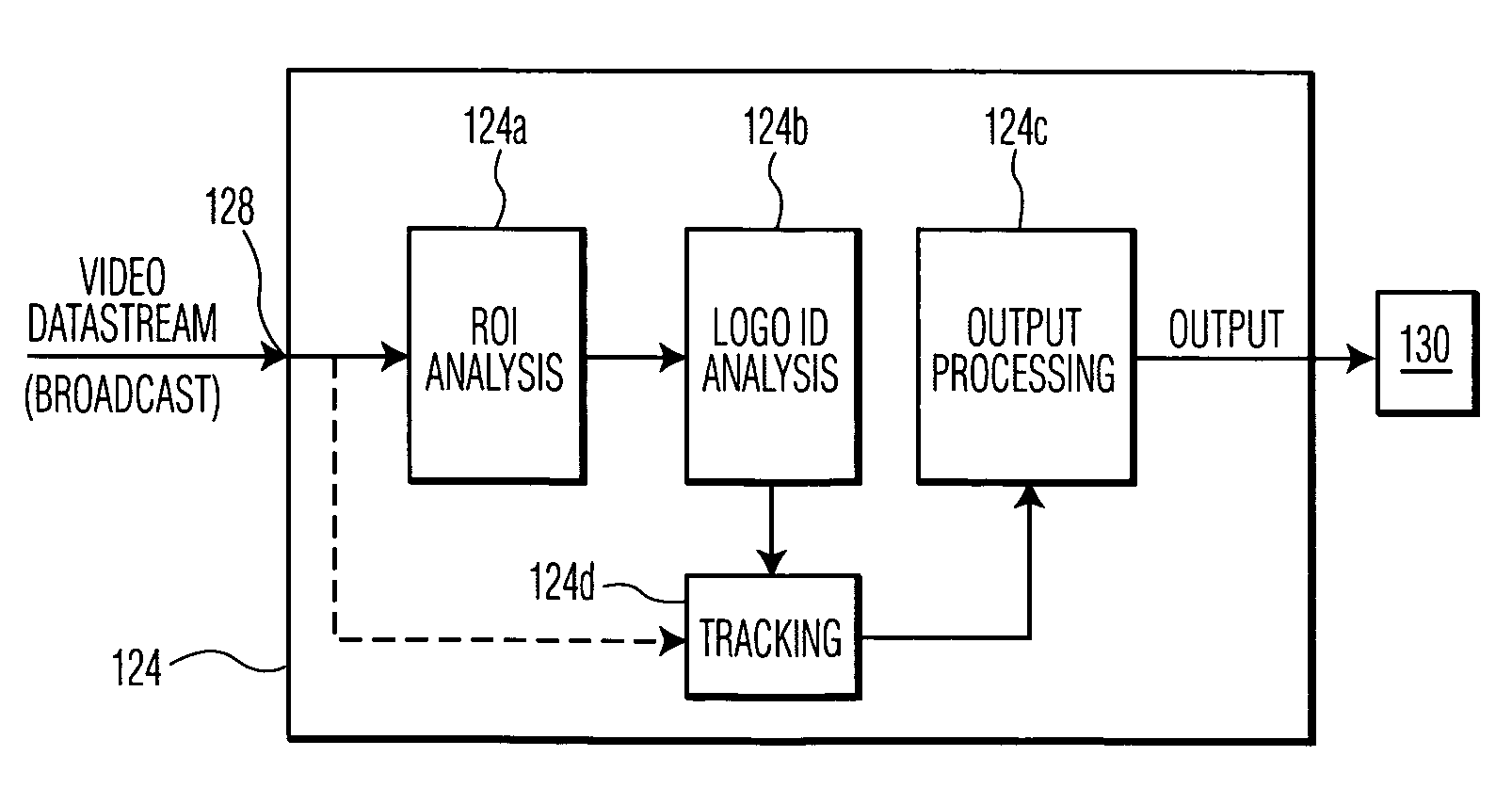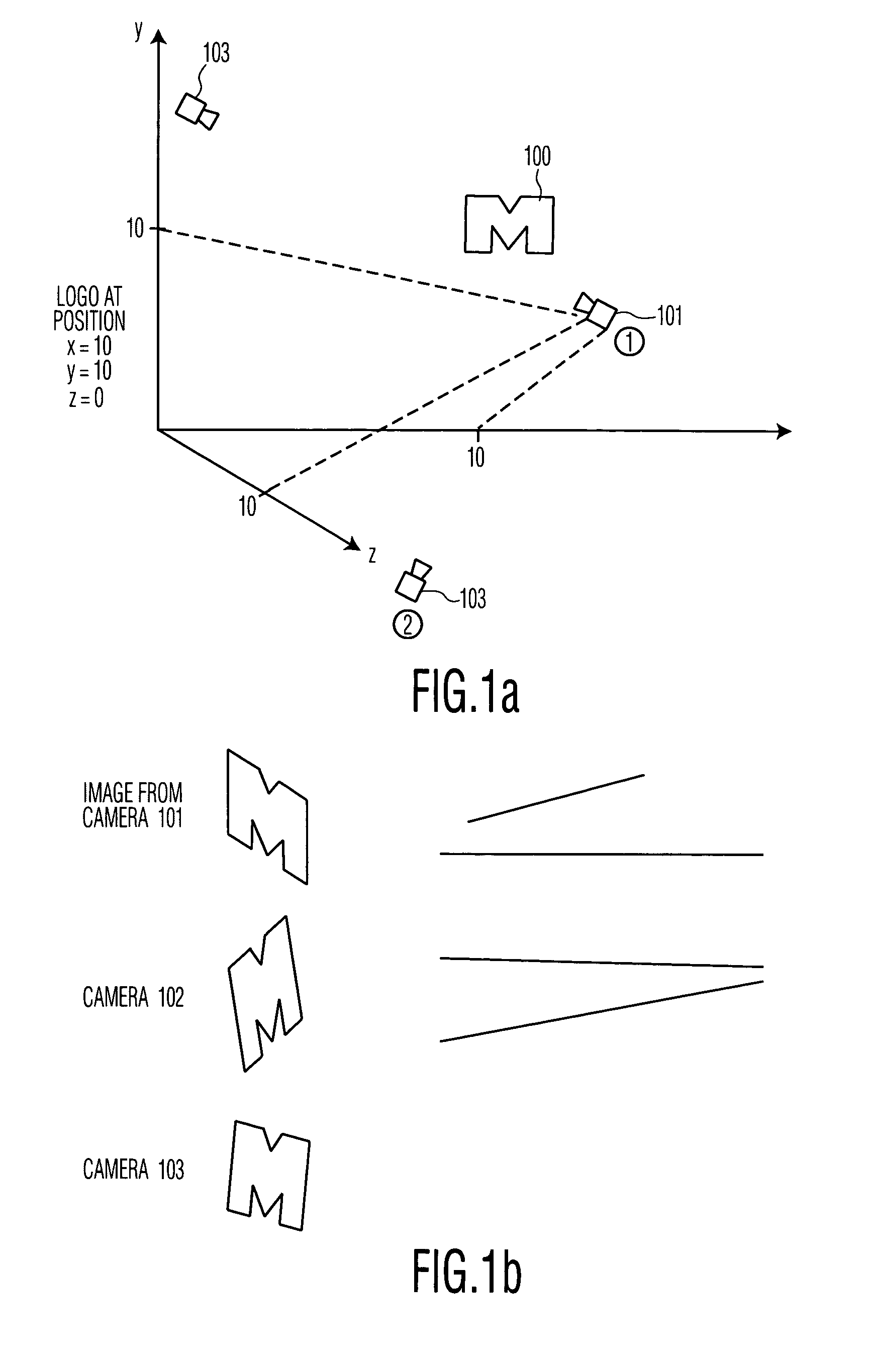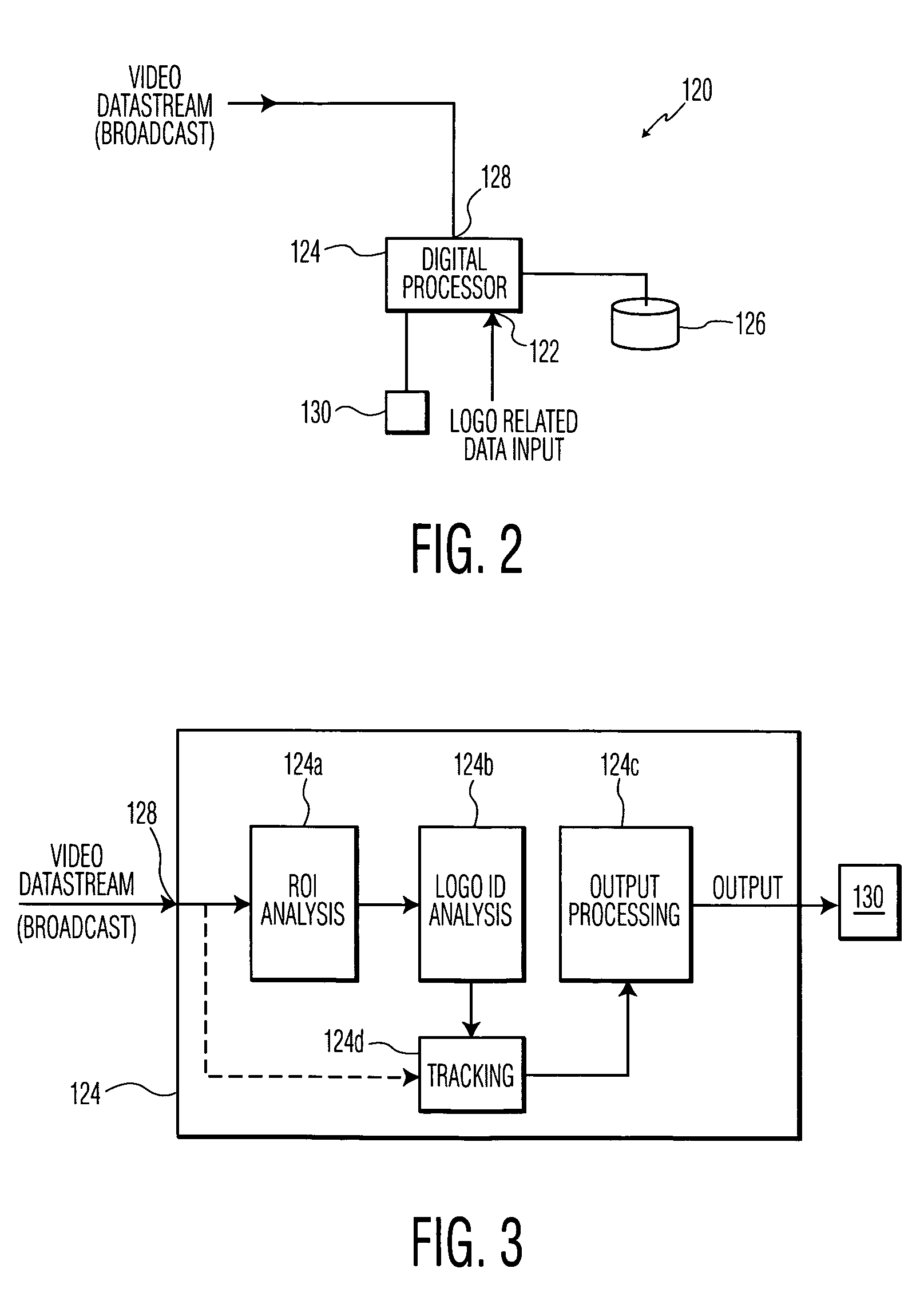Identification and evaluation of audience exposure to logos in a broadcast event
a technology of broadcast events and audience exposure, applied in the field of content based video analysis for the identification of logos, can solve the problems of high cost, escalation of cost, and advertisers typically have difficulty in evaluating the efficacy of money spent on advertising during broadcast events, and achieve the effect of greater certainty of search results
- Summary
- Abstract
- Description
- Claims
- Application Information
AI Technical Summary
Benefits of technology
Problems solved by technology
Method used
Image
Examples
Embodiment Construction
[0027]FIG. 1a is a representation of several cameras 101–103 in a frame of reference that are used to capture images of an event and each provide a number of video datastreams, which may be selected to broadcast the event, such as a sporting event. The different cameras 101–103 are trained on portions of the event (which may overlap) from different perspectives and angles. The camera chosen for broadcasting the event changes throughout the event depending on broadcast decisions and considerations, which in the past were typically related to the event itself. The various positions, angles, etc. of the cameras themselves may be moved or adjusted.
[0028]FIG. 1a also shows a representative logo, shown in the form of a large “M”, that may be captured with the images of some or all of the cameras 101–103. It is also noted that a camera that is broadcasting the event may also capture the logo within its field of view for a time, and then pan to another portion of the event and exclude the l...
PUM
 Login to View More
Login to View More Abstract
Description
Claims
Application Information
 Login to View More
Login to View More - R&D
- Intellectual Property
- Life Sciences
- Materials
- Tech Scout
- Unparalleled Data Quality
- Higher Quality Content
- 60% Fewer Hallucinations
Browse by: Latest US Patents, China's latest patents, Technical Efficacy Thesaurus, Application Domain, Technology Topic, Popular Technical Reports.
© 2025 PatSnap. All rights reserved.Legal|Privacy policy|Modern Slavery Act Transparency Statement|Sitemap|About US| Contact US: help@patsnap.com



